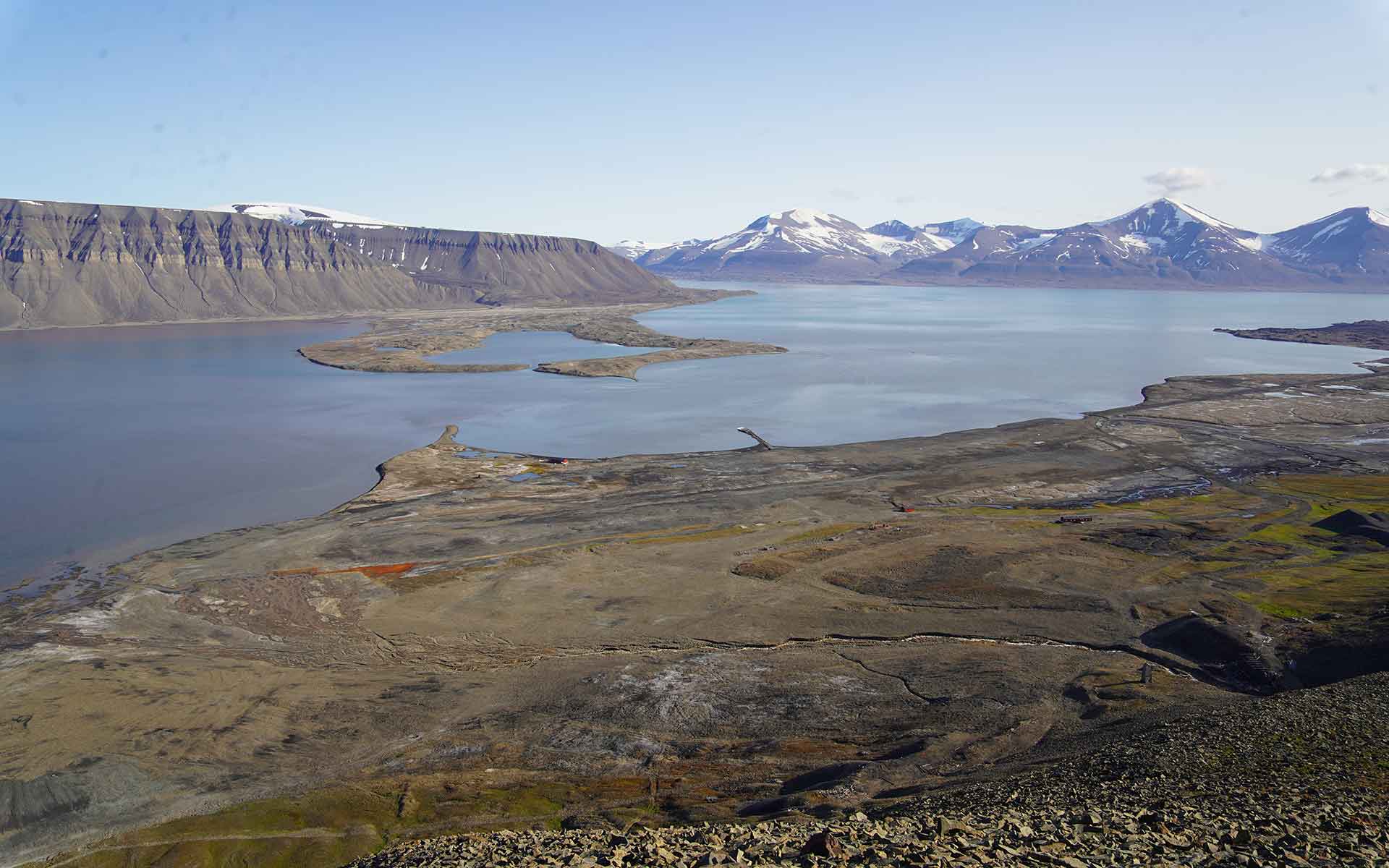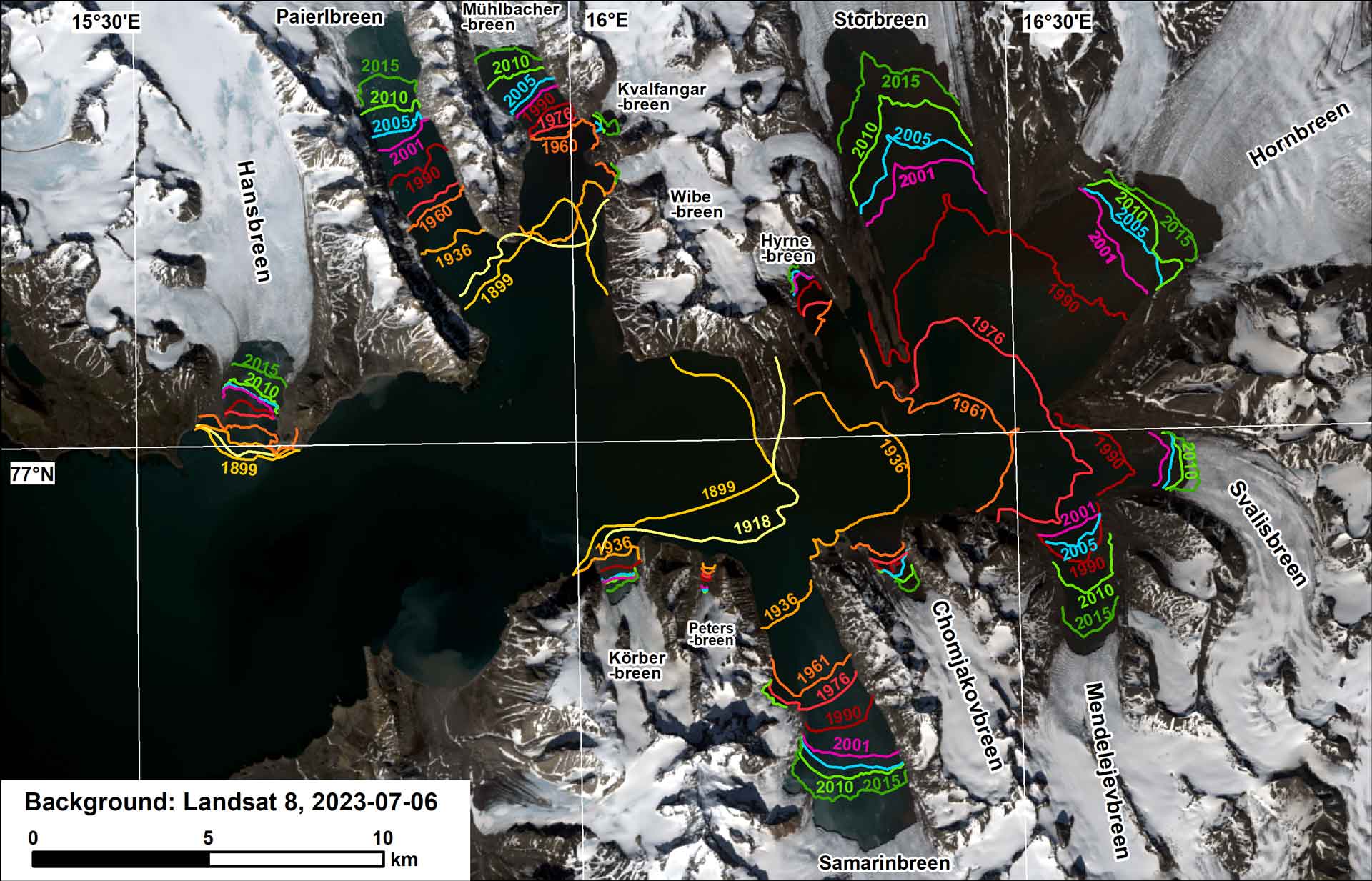
Landscape of Hornsund, with rugged mountains and fast-receding tidewater Hansbreen glacier (Photo by Adam Nawrot).
Geological Period
Quaternary
Main geological interest
Geomorphology and active geological processes
Location
Spitsbergen, Svalbard Archipelago, Norway
Hornsund: 76°58’19”N, 015°47’04”E
Van Mijenfjorden: 77°50’30”N, 016°42’26”E
Landscape of Hornsund, with rugged mountains and fast-receding tidewater Hansbreen glacier (Photo by Adam Nawrot).
A showcase of glaciers and landforms of polar environments.
The two areas represent complete high-latitude geomorphological systems, with glacial, periglacial, coastal, glaciolacustrine, and marine subsystems. Systematic research has resulted in thorough understanding of these systems, which serve as a natural laboratory to monitor ongoing environmental changes. Many individual glacial and periglacial landforms are textbook examples. It is foreseen that in a decadal perspective Hornsund will become a marine strait, isolating the southernmost part of Spitsbergen as an island. The Van Mijenfjorden area is a good reference for surging glaciers. Both areas are mostly pristine, with the legacy of past mining in Van Mijenfjorden largely reintegrated with the landscape.
- Geological description
Two fjords in south Spitsbergen represent the diversity of glacial and periglacial environments, including glaciers behaving in different ways. In the southerly Hornsund fjord numerous secondary inlets are steadily expanding as tidewater glaciers continue to retreat, whereas moraine ridges inland indicate much larger past extent of glaciation. The inner part of Van Mijenfjord consists of two branches, with one ending in a large glacial complex with several surging glaciers. One surge some 600 years ago formed a large moraine along the shores, partly ice-cored and partly consisting of marine clays. A large glaciolacustrine lake existed for a short time. Scheelebreen, another part of the complex, is presently surging and advanced some two kilometres over the summer and winter 2021/2022. In both areas landforms produced by meltwater are abundant, including large outwash plains. The ground is permanently frozen at depth, but summer thaw in the active layer gives rise to diverse periglacial landforms such as patterned (sorted) ground, frost fissures, solifluction features and rock glaciers. Raised marine terraces and relict cliffs provide evidence of glaci-isostatic uplift. These two localities show complementary bedrock topography. High-mountain scenery dominates around Hornsund, while the inner Van Mijenfjorden is surrounded by plateau mountains on sedimentary rocks.
- Scientific research and tradition
Scientific activities have been conducted since 1900 and are currently based on permanent research facilities established in both areas. Numerous benchmark studies of periglacial processes, glacier behaviour, postglacial uplift and landscape restoration have been published. Ongoing research focuses on geomorphic response to climate change.
- Reference
Błaszczyk, M., Jania, J.A. and Kolondra, L. (2013) ‘Fluctuations of tidewater glaciers in Hornsund Fjord (Southern Svalbard) since the beginning of the 20th century’, Polish Polar Research, 34(4), pp. 327–352. Available at: https://doi.org/10.2478/popore-2013-0024.
Erikstad, L., Hagen, D. and Simensen, T. (2023) ‘Working with Natural Processes: Restoring a Mining Landscape in the High Arctic, Svalbard, Norway’, Geoheritage, 15(3), p. 87. Available at: https://doi.org/10.1007/s12371-023-00855-4.
Jahn, A. (1975) Problems of the periglacial zone. Warsaw: Państwowe Wydawnictwo Naukowe. Available at: http://archive.org/details/problemsofperigl0000alfr.
Kristensen, L. et al. (2009) ‘Mud aprons in front of Svalbard surge moraines: Evidence of subglacial deforming layers or proglacial glaciotectonics?’, Geomorphology, 111(3), pp. 206–221. Available at: https://doi.org/10.1016/j.geomorph.2009.04.022.
Larsen, E. et al. (2018) ‘Lateglacial and Holocene glacier activity in the Van Mijenfjorden area, western Svalbard’, arktos, 4(1), pp. 1–21. Available at: https://doi.org/10.1007/s41063-018-0042-2.
Lyså, A. et al. (2018) ‘A temporary glacier-surge ice-dammed lake, Braganzavågen, Svalbard’, Boreas, 47(3), pp. 837–854. Available at: https://doi.org/10.1111/bor.12302.
Zwolinski, Z., Kostrzewski, A. and Pulina, M. (eds) (2013) Ancient and modern geoecosystems of Spitsbergen. Poznań: Bogucki Wyd Nauk.
- Author(s)
Piotr Migoń.
Institute of Geography and Regional Development, University of Wrocław, Wrocław, Poland.
Zbigniew Zwoliński.
Institute of Geoecology and Geoinformation, Adam Mickiewicz University in Poznań, Poland.
Lars Erikstad.
ProGEO. Norway.
Astrid Lyså.
Geological Survey of Norway.


